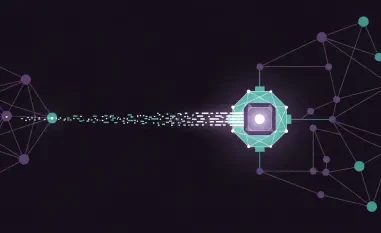In a chilling escalation of cyber warfare, Ukraine finds itself at the epicenter of sophisticated digital attacks orchestrated by Russian-aligned hacking groups, with Sandworm leading the charge against key economic sectors. This notorious group, linked to Russia’s military intelligence, has unleashed a new wave of destructive malware aimed at crippling vital industries such as government, energy, logistics, and agriculture. Recent reports from cybersecurity experts reveal a calculated strategy to destabilize the nation’s financial and operational stability through targeted strikes. These attacks are not mere disruptions but part of a broader agenda to inflict lasting economic damage, highlighting the growing role of cyber tools in geopolitical conflicts. As the digital battlefield expands, understanding the mechanisms and implications of Sandworm’s latest malware becomes critical for grasping the full scope of this threat to Ukraine and beyond.
Unveiling Sandworm’s Latest Cyber Arsenal
Sandworm, also known by aliases such as APT44 and Voodoo Bear, has emerged as a formidable adversary in the realm of cyber warfare, deploying innovative data-wiping malware like Zerolot and Sting against Ukrainian entities. These tools are designed to erase critical data, rendering systems inoperable and causing significant downtime for targeted organizations. The focus on sectors like grain production and logistics underscores a deliberate attempt to disrupt supply chains and food security, which are vital to Ukraine’s economic backbone. Beyond mere technical damage, these attacks aim to erode public trust in institutional stability, creating ripple effects that could hamper recovery efforts. Cybersecurity analyses indicate that Sandworm’s operations reflect a high degree of coordination and intent, aligning with strategic goals to weaken Ukraine’s resilience in the face of ongoing geopolitical tensions.
The economic ramifications of Sandworm’s malware campaigns extend far beyond immediate operational losses, as they target the very foundations of Ukraine’s fiscal health. By hitting government infrastructure, the group seeks to paralyze administrative functions, delaying policy responses and resource allocation during critical times. In the energy sector, disruptions can lead to widespread power outages, affecting both industrial output and civilian life, while attacks on agriculture threaten export revenues that are crucial for foreign exchange. This multi-pronged approach suggests a long-term vision of economic sabotage, where the cumulative impact of repeated strikes could undermine investor confidence and international trade partnerships. Such tactics reveal how cyber warfare has evolved into a weapon of attrition, aiming to exhaust a nation’s resources and willpower through relentless digital assaults.
Broader Russian Cyber Operations in Ukraine
While Sandworm takes center stage, other Russian-aligned groups like Gamaredon, Turla, and RomCom are intensifying their efforts to complement these destructive campaigns with espionage and broader targeting. Gamaredon, identified as one of the most active threats, has increased the frequency of its attacks, often collaborating with Turla to implant backdoors for sustained access to sensitive networks. This rare cooperation among advanced persistent threat (APT) groups signals a shift toward more complex and layered attack strategies, making defense efforts even more challenging. Their focus remains on extracting valuable intelligence from Ukrainian entities, which can be leveraged for future operations or shared with state actors to inform broader military or political maneuvers. The synergy among these groups amplifies the overall threat level, creating a multifaceted assault on national security.
In addition to espionage, these Russian APTs are innovating their toolsets with new file stealers and tunneling services to evade detection and maintain persistence within compromised systems. The use of spear phishing and zero-day exploits, as seen in RomCom’s exploitation of vulnerabilities in software like WinRAR, demonstrates a willingness to adapt and expand their reach beyond Ukraine to Western nations. This broadening scope indicates that while Ukraine remains the primary target, the economic and strategic fallout could spill over into allied countries, affecting global markets and security frameworks. The increasing sophistication of these operations, combined with cross-group collaboration, paints a troubling picture of a cyber ecosystem where state-sponsored actors continuously refine their methods to maximize disruption and gain strategic advantages.
Global Context and Emerging Cyber Threats
Beyond the Ukrainian front, the global cyber threat landscape reveals a web of state-aligned actors from China, Iran, and North Korea pursuing their own agendas, often with economic motives intertwined with espionage. China-aligned groups like Mustang Panda and Flax Typhoon target diverse regions, from Latin America to Taiwan’s healthcare sector, seeking geopolitical intelligence that can bolster national interests. Similarly, Iran’s MuddyWater employs advanced internal phishing tactics using compromised inboxes, while North Korean APTs like Lazarus focus on cryptocurrency theft and diplomatic espionage. These activities highlight a shared trend among APT groups worldwide: the use of cyber tools to achieve economic leverage and political influence, often at the expense of vulnerable sectors and regions. Ukraine’s plight, therefore, serves as a stark reminder of a broader, interconnected challenge.
The adaptability of these global APTs, marked by spear phishing, backdoor implants, and zero-day exploits, mirrors the tactics seen in Sandworm’s campaigns, suggesting a convergence of methodologies across state-sponsored actors. This evolution points to a cyber environment where economic disruption is as critical as traditional espionage, with targets expanding to include strategically vital industries. For Ukraine, this means that while Sandworm’s malware poses an immediate threat, the nation must also contend with potential spillover from other global actors who may exploit existing vulnerabilities. The interconnected nature of modern cyber warfare demands a unified defense strategy, as isolated responses may fall short against adversaries who share techniques and possibly intelligence across borders, amplifying the scale and impact of their operations.
Reflecting on Strategic Responses
Looking back, the coordinated cyberattacks led by Sandworm and other Russian-aligned groups against Ukraine underscored a pivotal moment in the recognition of cyber warfare as a tool for economic destabilization. The deployment of destructive malware like Zerolot and Sting revealed vulnerabilities in critical sectors, prompting a reevaluation of national cybersecurity postures. International collaboration emerged as a key pillar in countering these threats, with shared intelligence and joint defense initiatives proving essential in mitigating damage. Moving forward, bolstering resilience through updated infrastructure, advanced threat detection, and public-private partnerships became imperative. The lessons learned from these incidents emphasized the need for proactive measures, such as regular system audits and international cyber treaties, to anticipate and neutralize future campaigns. Addressing this evolving landscape required not just technical solutions, but a strategic mindset to safeguard economic stability against the unseen but devastating blows of digital warfare.













